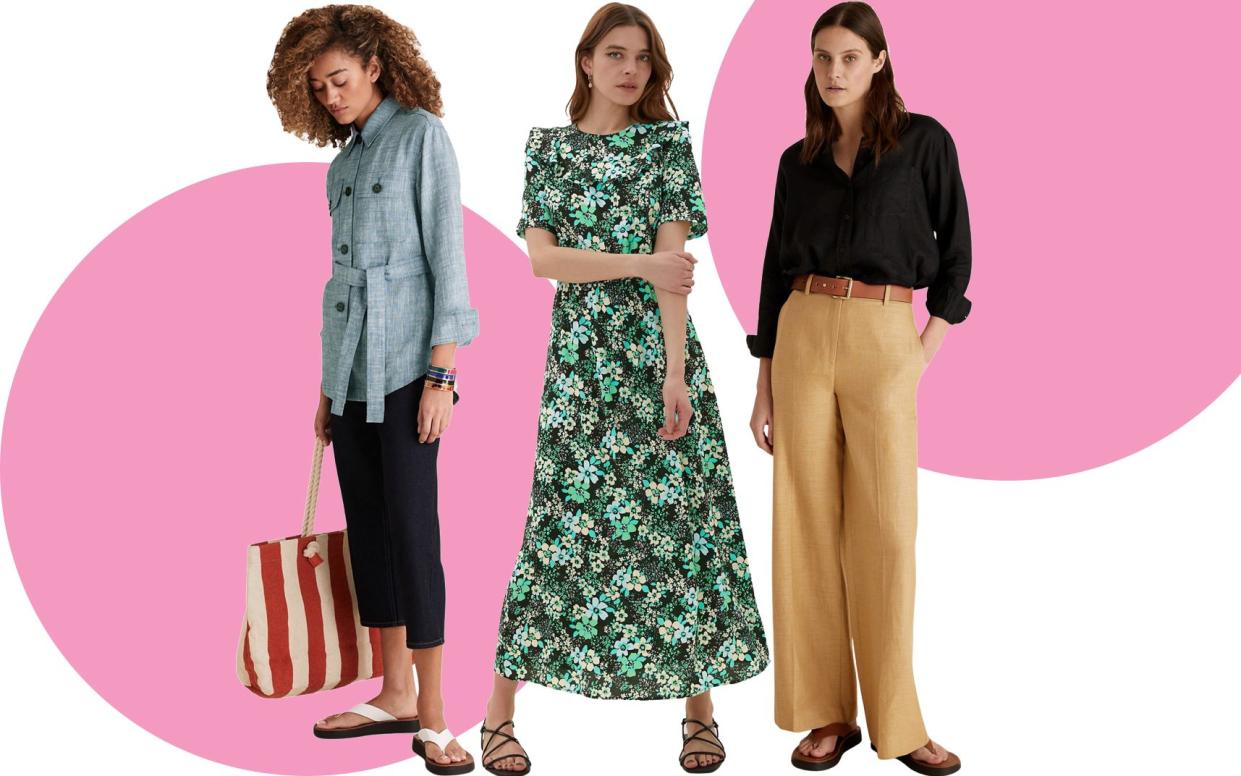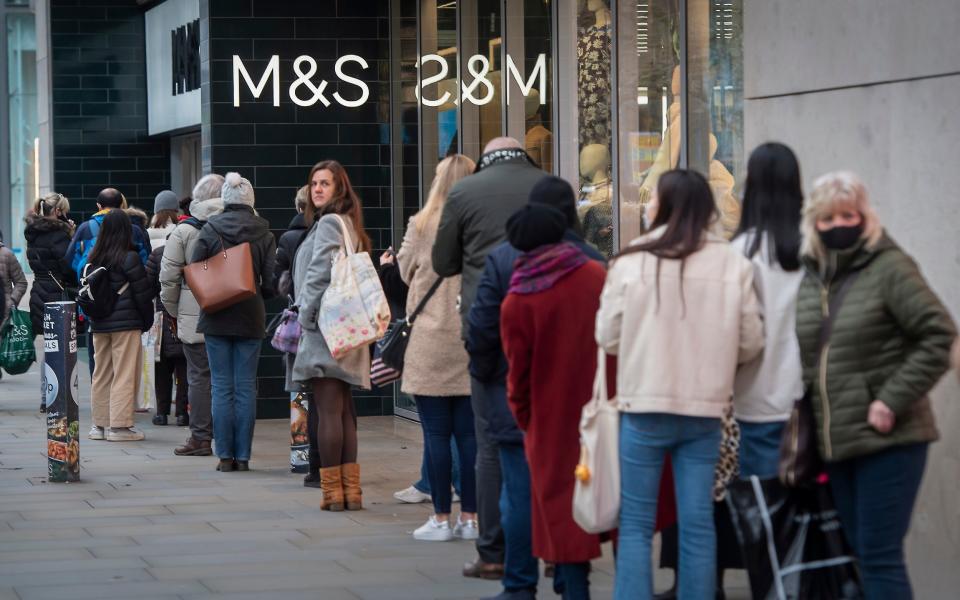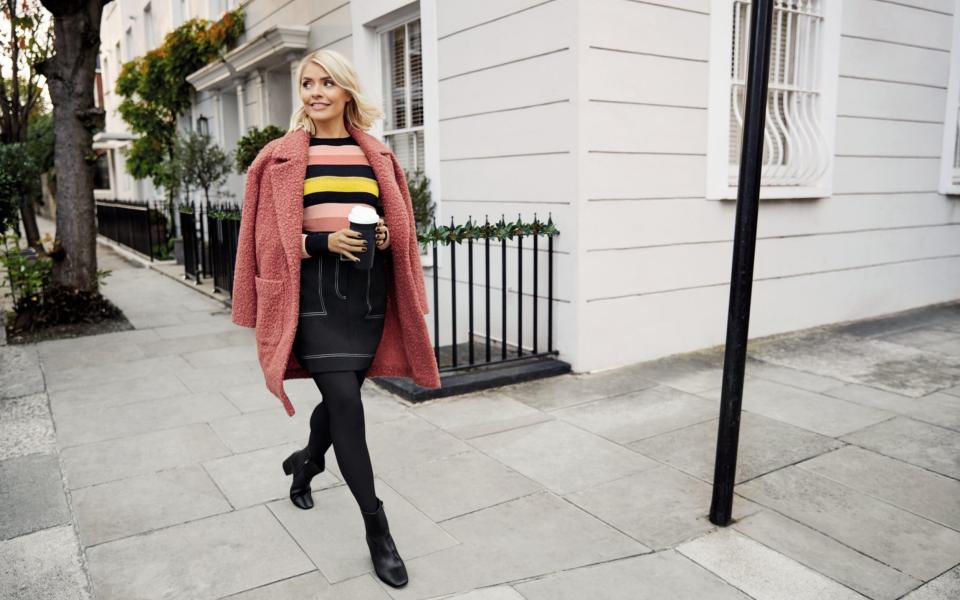Will M&S's new 'NOOS' fashion strategy save the retailer?

Marks & Spencer has several of this season’s most covetable summer dresses in store right now - and they’re selling well; the retailer shifted 30,000 Ghost frocks in a single week in April. But trend-led items can be hit and miss for M&S, which reported pre-tax losses of £209.4m last week - its first annual loss in 94 years, and its worst year on record.
The struggling clothing department - as well as the impact of Covid - was to blame for this figure, and so chief executive Steve Rowe is embarking on a new strategy that he hopes will turn the division around. He told a meeting with City banks and brokers last week that he is hoping ‘100 timeless essentials’ will revive its womenswear, according to the Mail on Sunday.
These products - which will include skinny jeans and Cashmilon jumpers (1.5 million of which are sold each year) - will hit stores in the autumn, and shoppers can expect at least 30 percent more of these products to be in stock, compared with previous seasons, so that supplies don’t run out and customers can always find what they need.

So could ditching fashion trends save M&S? It’s not such a crazy idea. In fact, timelessness has become such a movement within the industry, it’s even got its own acronym, NOOS, which can mean both ‘never out of stock’ or ‘never out of style’.
The NOOS business model has been pioneered by several sustainably focused labels striving to create timeless, quality clothing that they hope customers will wear for years, rather than a couple of seasons. They exist at every price point and for every taste, from the luxe fashion editor favourite Wardrobe.NYC, to uber-sustainable New Zealand label Maggie Marilyn (her ‘Forever’ collection of timeless designer dresses and tailoring sits alongside her ‘Somewhere’ line of affordable jeans and t-shirts), to American basics giant Everlane.
NOOS clothing typically forms part of a sustainability strategy, encouraging people to buy fewer, better clothes that don’t date, then wear and repair them for as long as you can - but it’s a concept that’s been touted by many fashion experts over the years because it’s simply a better way to build your wardrobe. You only need to buy a Burberry trench once, but you can wear it for decades to come. Ditto a Chanel handbag or your favourite crew-neck cashmere knit (provided the moths don’t get to it).

As a consumer, this has been the attitude I’ve strived towards for years. I call it ‘dad shopping’, because it’s the way my dad has always bought and treated his clothes. Some of the shirts and ties he wears for his work as a doctor are as old as me, and - while I’d be lying if I said I wasn’t swayed by the odd trend - I love the idea of cherishing one’s clothes so much.
M&S will find that its NOOS products will help it reach its sustainability goals, says Riley Uggla of Riley Studio: “We saw first hand the impact of creating season after season: the waste, the resources it used and it simply wasn’t sustainable. We set out to create seasonless wardrobe staples to tackle this problem and focus on creating quality pieces that would stand the test of time.”
Timelessness isn’t a sexy sell though, and M&S may find that making this shift proves hard to promote. After all, the entire fashion industry is structured around newness. Is it possible to run a viable business based on NOOS products that a shopper only needs to buy once?
It’s a challenge, but it’s not impossible, says Georgia Dant, founder of Marfa Stance, the foundation of which is a single reversible quilted jacket. “Actually, I'm creating a business model for a repeat customer because they buy one piece, then they can add a collar which is the second purchase, a hood, the third purchase,” she explains. Once she has a happy customer, she explains, they’re hooked. “It’s about maintaining the value and integrity of the hero piece that they initially bought.”
She’s right, and it could work to M&S’s advantage too, especially given its affordable price points. If a shopper falls in love with its jeans or tees or knitwear, they’ll buy them in every colour.
It’s a departure from the way the rest of the high street operates - diluting catwalk trends for the mass market, then putting it on sale before the next season fills the store - but M&S is actually taking a step into what looks set to to be the future of fashion, says Jessie Willner of The Mighty Company, which has just launched a ‘Lifetime’ collection of leather jackets. “It feels like the tide is changing,” she says. “[Today’s customer] understands that you’re investing in something that is made to be with you for your whole life, not just a season.”
For Maggie Hewitt, founder of Maggie Marilyn, it's time to let go of the idea of seasonal collections altogether. "If we want to transition away from a linear and extractive model to a circular and regenerative future, we have to slow down the pace in which product is churned out. As an industry we have to take accountability, we need to stop fuelling customers' insatiable appetite for newness. We need to re educate the customer to buy with intention, slowly and mindfully."
As a die-hard dad shopper, I share these perspectives, but it’s hard to tell whether I’m part of the majority or the minority. If I’m the latter, then there may be an adjustment period for the average M&S shopper before it’s truly viewed as the new Gap or Uniqlo. As a brand though, it’s a national treasure, so hopefully customer loyalty will carry it through.
For more news, analysis and advice from The Telegraph's fashion desk, click here to sign up to get our weekly newsletter, straight to your inbox every Friday. Follow our Instagram @Telegraphfashion


